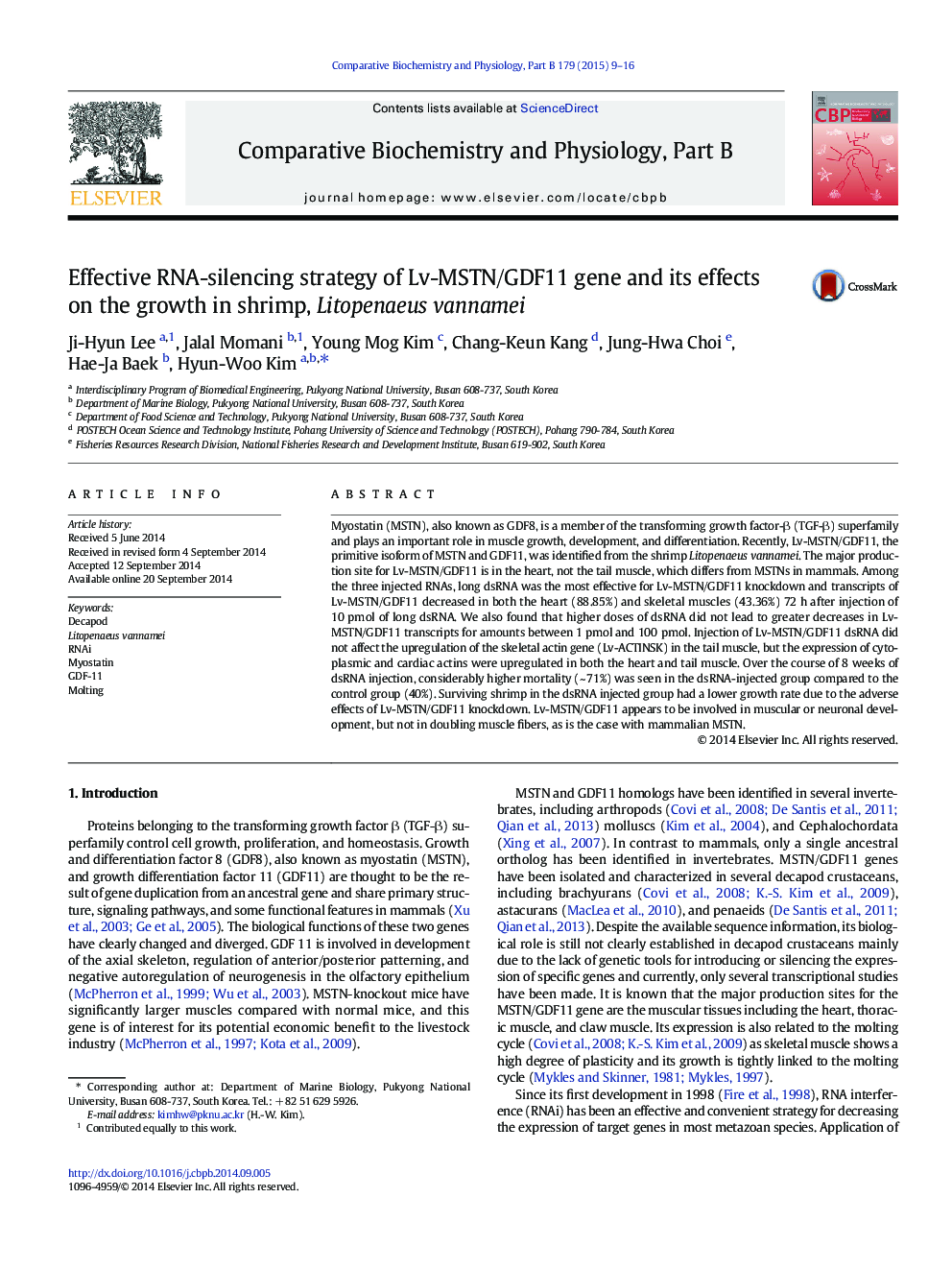| Article ID | Journal | Published Year | Pages | File Type |
|---|---|---|---|---|
| 1975244 | Comparative Biochemistry and Physiology Part B: Biochemistry and Molecular Biology | 2015 | 8 Pages |
Myostatin (MSTN), also known as GDF8, is a member of the transforming growth factor-β (TGF-β) superfamily and plays an important role in muscle growth, development, and differentiation. Recently, Lv-MSTN/GDF11, the primitive isoform of MSTN and GDF11, was identified from the shrimp Litopenaeus vannamei. The major production site for Lv-MSTN/GDF11 is in the heart, not the tail muscle, which differs from MSTNs in mammals. Among the three injected RNAs, long dsRNA was the most effective for Lv-MSTN/GDF11 knockdown and transcripts of Lv-MSTN/GDF11 decreased in both the heart (88.85%) and skeletal muscles (43.36%) 72 h after injection of 10 pmol of long dsRNA. We also found that higher doses of dsRNA did not lead to greater decreases in Lv-MSTN/GDF11 transcripts for amounts between 1 pmol and 100 pmol. Injection of Lv-MSTN/GDF11 dsRNA did not affect the upregulation of the skeletal actin gene (Lv-ACTINSK) in the tail muscle, but the expression of cytoplasmic and cardiac actins were upregulated in both the heart and tail muscle. Over the course of 8 weeks of dsRNA injection, considerably higher mortality (~ 71%) was seen in the dsRNA-injected group compared to the control group (40%). Surviving shrimp in the dsRNA injected group had a lower growth rate due to the adverse effects of Lv-MSTN/GDF11 knockdown. Lv-MSTN/GDF11 appears to be involved in muscular or neuronal development, but not in doubling muscle fibers, as is the case with mammalian MSTN.
